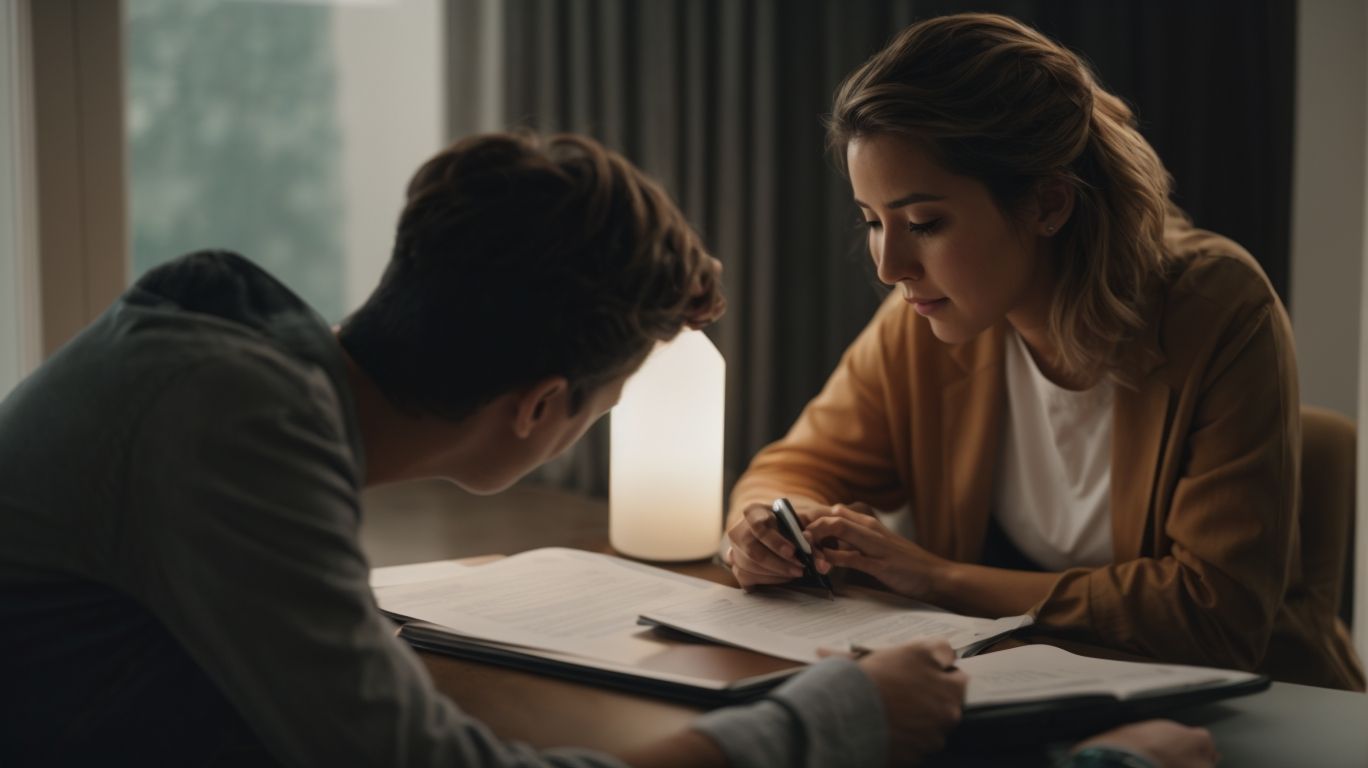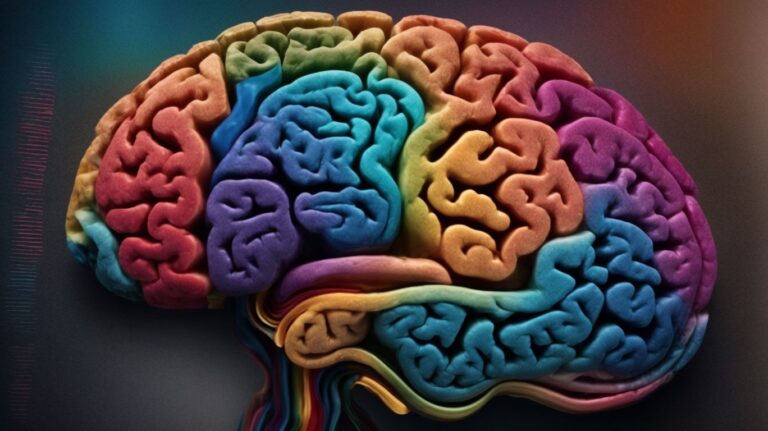Are you one of the millions of people who suffer from phobias? Understanding what causes phobias and the most common types can help you take the first step towards overcoming your fears.
From genetics to traumatic events, there are various factors that contribute to the development of phobias. But fear not, as there are effective treatment options available, such as exposure therapy and medication.
Join us as we explore the world of phobias and learn how to conquer your fears.
Contents
- 1 What are Phobias?
- 2 What Causes Phobias?
- 3 What Are the Most Common Types of Phobias?
- 4 How Are Phobias Diagnosed?
- 5 What Are the Treatment Options for Phobias?
- 6 How Effective Are These Treatments?
- 7 What Are the Steps to Overcoming a Phobia?
- 8 Can Phobias Be Prevented?
- 9 Frequently Asked Questions
- 9.1 What are some effective ways to treat phobias?
- 9.2 How does exposure therapy work in treating phobias?
- 9.3 What is cognitive-behavioral therapy and how can it help with phobias?
- 9.4 Can relaxation techniques be effective in treating phobias?
- 9.5 What is virtual reality therapy and how does it work in treating phobias?
- 9.6 Are there any medications that can be used to treat phobias?
What are Phobias?
Phobias are intense, irrational fears that can significantly impact a person’s mental health and daily life.
These fears are more than just common worries; they trigger severe anxiety reactions that can interfere with a person’s ability to function normally.
Individuals with phobias may go to great lengths to avoid their triggers, which can lead to feelings of isolation and limit their experiences in various aspects of life, such as work, relationships, and personal growth.
Some people may develop phobias related to specific objects or situations, like heights (acrophobia), enclosed spaces (claustrophobia), or social settings (social phobia), while others may experience more generalized fears, such as agoraphobia.
What Causes Phobias?
The development of phobias can be influenced by genetic factors, traumatic events, and learned behaviors.
Genetic factors play a significant role in the predisposition to certain phobias, as individuals with a family history of anxiety disorders may be more prone to developing phobic reactions. Past traumatic events can trigger the onset of phobias, as intense or distressing experiences can leave lasting psychological imprints that manifest as persistent fears.
Learned behaviors contribute to the development of phobias, as individuals may acquire phobias through observation or direct conditioning. For instance, if a person witnesses someone close experiencing extreme fear in a particular situation, they may internalize that fear and develop a phobia towards similar circumstances.
Genetics
Genetics plays a role in the development of phobias, as certain individuals may have a genetic predisposition to specific fears and anxieties.
Studies have shown that phobias can be hereditary, meaning they can be passed down from parents to their children through a complex interplay of genetic factors. Certain genes associated with heightened fear responses or anxiety disorders have been identified, suggesting a biological basis for the development of phobias.
Plus inherited tendencies, environmental factors can also interact with genetic predispositions to trigger phobia development. It is essential to understand the intricate relationship between genes and environmental influences to comprehensively comprehend the etiology of phobias.
Traumatic Events
Traumatic events can trigger the onset of phobias, as intense or frightening experiences may lead to the development of irrational fears.
When an individual goes through a distressing event, their mind can register the experience in a way that links certain stimuli to fear responses disproportionately. This conditioning effect can manifest in various phobias, ranging from specific triggers like heights or spiders to more generalized anxieties. The intensity and nature of the trauma play a significant role in shaping the particular phobia that emerges. Unresolved traumas from the past can amplify the vulnerability to developing phobias, as they create a fertile ground for irrational fears to take root.
Learned Behavior
Learned behaviors can also contribute to the development of phobias, as individuals may acquire fears through observation or association.
For example, a child witnessing a family member displaying a fear of heights may develop a similar fear through observational learning. Similarly, experiencing a traumatic event associated with a specific object or situation can lead to the formation of a phobia. This process, known as classical conditioning, involves linking a neutral stimulus with a negative experience, creating a lasting fear response.
Individuals can develop phobias through operant conditioning, where behaviors are reinforced or punished based on the consequences. Avoidance behaviors, such as fleeing from a perceived threat, can strengthen phobias by providing temporary relief from anxiety.
What Are the Most Common Types of Phobias?
The most common types of phobias include specific phobias, such as fear of heights or spiders, and agoraphobia, which involves fear of open or crowded spaces.
Specific phobias are characterized by intense and irrational fears of particular objects or situations, causing individuals to experience overwhelming anxiety. Common specific phobias encompass fears of flying, needles, animals, and enclosed spaces. These fears can significantly impact daily life and may lead to avoidance behavior.
On the other hand, agoraphobia is a more complex phobia, typically involving fear of being in situations where escape might be difficult or help unavailable. People with agoraphobia often fear places or situations that could trigger panic attacks, such as crowded areas, public transportation, or open spaces.
Animal Phobias
Animal phobias are a common type of specific phobia, where individuals experience intense fear or anxiety towards certain animals.
When faced with their fear triggers, individuals with animal phobias may exhibit physical symptoms such as rapid heart rate, sweating, nausea, and trembling. Common animals that evoke these intense reactions include spiders, snakes, dogs, and insects. Interestingly, the fear response can vary greatly from one person to another, with some individuals experiencing mild anxiety in the presence of animals, while others may have debilitating panic attacks. The origins of these phobias can stem from past traumatic experiences, learned behaviors, or even cultural beliefs.
Natural Environment Phobias
Natural environment phobias involve irrational fears of natural elements like storms, heights, or water bodies, leading to significant distress in affected individuals.
Storm phobia, also known as astraphobia, causes overwhelming anxiety during thunderstorms, leading to panic attacks for some individuals. The fear of heights, termed acrophobia, can trigger extreme avoidance behaviors, impacting daily activities and travel choices.
The fear of water bodies, known as aquaphobia, can stem from traumatic events or unknown origins, making activities like swimming or sailing unbearable for those affected.
Situational Phobias
Situational phobias involve intense anxiety triggered by specific situations or contexts, such as flying, driving, or enclosed spaces.
When exposed to their fear-inducing scenarios, individuals with situational phobias may experience various fear responses such as increased heart rate, sweating, trembling, and a sense of impending doom. These reactions can significantly impact their quality of life, leading to avoidance behaviors that disrupt daily routines and relationships. For instance, someone with a fear of flying may go to great lengths to avoid air travel, missing out on important events or experiences. The distress caused by situational phobias is often disproportionate to the actual danger posed by the situation, illustrating the irrational nature of these fears.
How Are Phobias Diagnosed?
Phobias are typically diagnosed by healthcare professionals through a detailed assessment of a person’s symptoms, triggers, and medical history.
This diagnostic process involves carefully evaluating an individual’s reaction to specific stimuli that elicit fear or anxiety, which may manifest as palpitations, sweating, trembling, or avoidance behaviors.
Healthcare providers also play a crucial role in identifying underlying psychological factors contributing to the phobia, such as past traumatic experiences or genetic predispositions, enabling a more personalized treatment approach.
What Are the Treatment Options for Phobias?
Various treatment options for phobias include therapy techniques like exposure therapy and cognitive behavioral therapy, as well as medications such as antidepressants and beta blockers.
Exposure therapy is a form of psychological treatment where individuals are gradually exposed to the feared object or situation in a controlled environment to reduce anxiety levels.
Cognitive behavioral therapy helps individuals identify and change negative thought patterns associated with their phobias, leading to a reduction in fear responses.
Antidepressants, particularly selective serotonin reuptake inhibitors (SSRIs) and serotonin-norepinephrine reuptake inhibitors (SNRIs), are commonly prescribed to help manage symptoms of anxiety and phobias.
Beta blockers are medications that can help control physical symptoms of anxiety, such as rapid heartbeat and trembling, by blocking the effects of adrenaline.
Exposure Therapy
Exposure therapy is a common treatment for phobias, involving gradual exposure to feared stimuli to reduce anxiety responses over time.
By facing their fears in a safe environment, individuals learn to manage their anxiety and decrease avoidance behaviors associated with specific phobias. The principle behind exposure therapy is based on the concept of habituation, where repeated exposure to the feared object or situation results in decreased fear response over time. This approach helps individuals confront their fears and develop coping mechanisms to deal with anxiety-provoking situations. Exposure therapy can be conducted in various forms, such as in vivo exposure (real-life scenarios), imaginal exposure (visualization techniques), and virtual reality exposure, tailored to the individual’s specific phobia.
Cognitive Behavioral Therapy (CBT)
Cognitive Behavioral Therapy (CBT) is a therapeutic approach that helps individuals challenge and modify negative thought patterns and behaviors associated with phobias.
One of the core techniques of CBT that proves effective in treating phobias is cognitive restructuring, which involves identifying and challenging irrational beliefs that contribute to the fear response. By replacing these negative thought patterns with more realistic and balanced ones, individuals can gradually change their perception of the phobic trigger.
Behavioral interventions in CBT for phobias focus on exposing individuals to their feared stimuli in a controlled and gradual manner, known as systematic desensitization. This process helps individuals confront their fears in a safe environment and relearn healthy responses, reducing the intensity and impact of the phobia.
Medications
Medications like antidepressants and beta blockers may be prescribed to manage phobia symptoms and alleviate anxiety responses in individuals.
Antidepressants, such as selective serotonin reuptake inhibitors (SSRIs) and serotonin and norepinephrine reuptake inhibitors (SNRIs), are commonly utilized to regulate the brain’s neurotransmitters, which play a significant role in mood and emotional responses. These medications work by increasing the availability of certain neurotransmitters like serotonin, thus helping to stabilize mood and reduce anxiety levels in phobic individuals. On the other hand, beta blockers, like propranolol, target the physical symptoms of anxiety by blocking the effects of adrenaline, which can help control heart rate, trembling, and sweating during anxiety-provoking situations.
Relaxation Techniques
Relaxation techniques such as deep breathing, mindfulness, and progressive muscle relaxation can help individuals manage anxiety and stress associated with phobias.
Deep breathing exercises are particularly useful in phobia treatment as they activate the body’s relaxation response, calming the nervous system and reducing the intensity of fear responses.
Mindfulness practices teach individuals to stay present and observe their thoughts without judgment, which can lead to a greater sense of control over phobic triggers.
Progressive muscle relaxation involves tensing and then relaxing different muscle groups, helping to release physical tension and promote a sense of calmness.
How Effective Are These Treatments?
The effectiveness of phobia treatments varies depending on individual factors, the type of phobia, and the chosen therapy or medication.
When determining the most suitable phobia treatment, it is essential to consider the severity of the phobia, the patient’s overall health, and any underlying mental health conditions. Factors such as age, past experiences, and environmental influences can also impact the success of treatment.
Therapy options range from cognitive-behavioral therapy to exposure therapy, each tailored to address specific phobia-related symptoms and triggers. The effectiveness of medication in treating phobias varies depending on the individual’s response and tolerance to different medications.
What Are the Steps to Overcoming a Phobia?
Overcoming a phobia involves identifying and challenging cognitive distortions, gradually exposing oneself to feared stimuli, and seeking support from healthcare providers or therapists.
One crucial aspect in addressing phobias is cognitive restructuring, a process that involves recognizing and altering negative thought patterns related to the fear. By replacing irrational beliefs with more rational ones, individuals can begin to shift their perception of the phobic trigger. Alongside cognitive restructuring, exposure techniques play a pivotal role in desensitizing individuals to the feared object or situation. This might involve gradually facing the fear in a controlled environment to retrain the brain’s response.
Can Phobias Be Prevented?
While phobias cannot always be prevented, minimizing exposure to triggers, addressing environmental factors, and developing healthy coping mechanisms may help reduce the risk of phobia development.
One effective strategy to prevent phobias is to identify the triggers that may lead to the development of irrational fears. By recognizing these trigger points, individuals can proactively avoid situations or objects that provoke anxiety. This awareness enables them to create boundaries and establish a sense of control over their environment.
Paying attention to environmental factors such as lighting, noise levels, and overall comfort can contribute to a sense of security and ease anxiety. Creating a calm and supportive environment can help reduce the likelihood of triggering phobic reactions.
Frequently Asked Questions
What are some effective ways to treat phobias?
Some effective ways to treat phobias include exposure therapy, cognitive-behavioral therapy, relaxation techniques, virtual reality therapy, and medication.
How does exposure therapy work in treating phobias?
Exposure therapy involves gradually exposing the individual to the feared object or situation in a controlled and safe environment. This helps the person to confront their fears and learn to manage their anxiety.
What is cognitive-behavioral therapy and how can it help with phobias?
Cognitive-behavioral therapy (CBT) is a form of psychotherapy that focuses on changing negative thoughts and behaviors. It can help individuals with phobias by teaching them coping mechanisms and challenging irrational thoughts related to their fear.
Can relaxation techniques be effective in treating phobias?
Yes, relaxation techniques such as deep breathing, meditation, and muscle relaxation can help individuals with phobias to manage their anxiety and reduce their physical responses to fear.
What is virtual reality therapy and how does it work in treating phobias?
Virtual reality therapy involves using computer-generated simulations to expose individuals to their fear in a realistic and controlled setting. This can help them to gradually confront and overcome their phobia.
Are there any medications that can be used to treat phobias?
Yes, certain medications such as beta-blockers and antidepressants may be prescribed to help manage symptoms of phobias. However, they are typically used in combination with therapy for more effective results.



